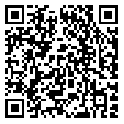i1v2e5y5pubs
W27255
LAVAZZA: THE CHALLENGES OF FOREIGN MARKET ENTRY IN A
BRAND-INTENSIVE INDUSTRY1
Soni Jha, Solon Moreira, and Ram Mudambi wrote this case solely to provide material for class discussion. The authors do not intend
to illustrate either effective or ineffective handling of a managerial situation. The authors may have disguised certain names and other
identifying information to protect confidentiality.
This publication may not be transmitted, photocopied, digitized, or otherwise reproduced in any form or by any means without the
permission of the copyright holder. Reproduction of this material is not covered under authorization by any reproduction rights
organization. To order copies or request permission to reproduce materials, contact Ivey Publishing, Ivey Business School, Western
University, London, Ontario, Canada, N6G 0N1; (t) 519.661.3208; (e) cases@ivey.ca; www.iveypublishing.ca. Our goal is to publish
materials of the highest quality; submit any errata to publishcases@ivey.ca.
Copyright © 2022, Ivey Business School Foundation Version: 2022-08-12
Luigi Lavazza SpA (Lavazza) was the largest coffee maker in Italy, often analogously referred to as Italy’s
favourite coffee, and the seventh-largest coffee roaster in the world.
2 Founded in Turin, Italy, in 1895,
Lavazza had a 125-year-old legacy with deep roots in Italian coffee culture and was primarily known for
its espresso blends—a cornerstone of the coffee culture in Italy and the rest of Europe.
3 Since the 1980s,
after Lavazza ventured into global markets, it had seen tremendous growth, and by 2020, more than 70 per
cent of Lavazza’s global sales came from overseas markets.
4 Despite its success in global markets, Lavazza
was finding it difficult to make its mark in the United States—the largest coffee market in the world, worth
more than US$8.1 billion,
5 and the second-largest market for Lavazza (see Exhibit 1). After establishing its
North American subsidiary in 1989,
6 Lavazza entered the US market in the 1990s using strategic
partnerships with restaurants and hotels to cater to US consumers. But even with its thirty years of
experience in the US market and a strong global brand, Lavazza continued to struggle in the US market,
earning total revenue of $110.8 million across all of its segments, representing a market share of less than
1.4 per cent.7 By September 2021, as competition in the global coffee industry intensified, Lavazza could
no longer afford to be complacent with its performance in the US market, and it sought to increase its
market share. However, Lavazza faced a key strategic decision: should it try to introduce US consumers to
the “Italian way” of drinking espresso coffee, or should it create a new brand identity and a new portfolio
of products that were more aligned with the tastes of US consumers?
LUIGI LAVAZZA AND AN EMPHASIS ON INNOVATION
In 1895, the founder of the company, Luigi Lavazza, invented the art of blending coffee by mixing coffee
of different origins and then roasting it, often customized to the individual tastes of his customers. This
required Lavazza to source coffee beans from multiple geographical locations dispersed globally, an
unusual strategy for a grocery shop coffee seller at the time. However, Lavazza’s blended coffee soon
became a sensation with local coffee consumers and led to the company’s eventual success. By 1927,
Lavazza had transformed from a small-scale commercial enterprise into a family company.
Staying true to the vision of its founder, the company philosophy continued to emphasize product quality
and innovation through to the latter half of the twentieth century. Unlike most family firms, Lavazza
This document is authorized for use only in Vikas Kumar 's IBUS5003 Global Business (SEM 1, 2023) PART 3 at University of Sydney from May 2023 to Nov 2023.



